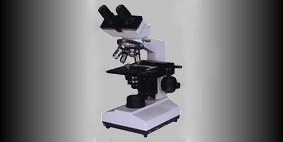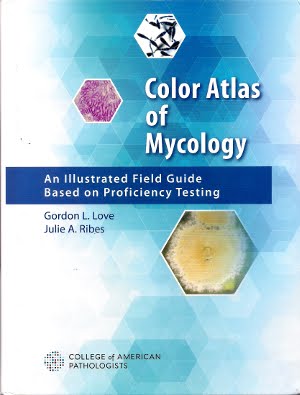Intestinal Protozoa: Amoebae
The pathogenic Entamoeba histolytica and non-pathogenic Entamoeba dispar are indistinguishable in stained smears and must be reported as E.histolytica/dispar until speciation can be confirmed by serologic or antigenic means. For simplicity I’ll refer to this complex throughout this text as E.histolytica with the assumption that species confirmation will follow.
Distribution;
Entamoeba histolytica has worldwide distribution however is more prevalent in the tropics and sub-tropics than in colder climates. As much as 10% of the worlds population may be infected with E.histolytica and ranks only behind malaria and Schistosomiasis as a cause of worldwide mortality.
Yet with this relatively large percentage of worldwide infection, only a smaller number of infected go on to develop severe dysentery or extra-intestinal disease. Over the years, a number of theories have been proposed for this discrepancy however, recently is has been shown that two morphologically identical species exist. Isoenzyme patterns for enzymes such as hexokinase and phosphoglucomutase differ between invasive and non-invasive species and can be used to confirm identification. Monoclonal antibodies and DNA probes have also been developed for this purpose.
Poor sanitation and overcrowding are major contributors to the prevalence and transmission of E.histolytica. Infection is usually acquired by ingestion of the cyst through contaminated water or food. After ingestion, the cyst passes through the acidic environment of the stomach to the more alkaline intestine. The excystation produces trophozoites which then through enzymatic and contact dependant cytotoxic means are able to attach and penetrate the intestinal mucosal wall A small crater-like lesion develops and progresses to a classic flask shaped ulcer as the organisms establishes itself. Cysteine proteinases secreted by the trophozoite degrade collagen, elastin and fibronectin. Phospholipases and haemolysins may also facilitate spread through the tissues. A pore-forming protein is the final mechanism in cellular death as it allows the influx of calcium ions into the cell.
Cell mediated immune response has little effect against E.histolytica and the organisms may be able to suppress immune response to some degree.
Clinical Symptoms;
Manifestations of the disease can present itself in three ways;
- Asymptomatic cyst passer - does not exhibit illness but is a source of cysts for infecting others.
- Acute amoebic colitis or dysentery - patients have fever, cramping and abdominal pain resulting in numerous bloody stools per day. Ulceration may result in perforation of the bowel and peritonitis. As trophozoites do not survive well outside of the body, these individuals are not a significant source for infecting others.
- Invasive disease - development of the classic flask shaped ulcer may result in perforation and distribution of the trophozoite through portal circulation. The liver is the primary organ colonized by E.histolytica extra-intestinal trophozoites however pluropulmonary and central nervous system infections have been described.
Laboratory diagnosis is made through identification of the trophozoite or cysts in the stool. A minimum of 3 stools over a period of 10 days is recommended. Liquid stools are associated with acute amoebas where trophozoites are the form of E.histolytica present. Such stools should be examined immediately (~30 min) for motile trophozoites. If present, trophs may show a directional progressive motility as pseudopod develops in the direction of movement.
Cysts are usually found in semi-formed or formed stools.
Stools, whether liquid or formed should be preserved in PVA or SAF (1) preservative to prevent degradation. Preserved samples can be used to make concentrations and permanent stained slides for microscopic examination.
Morphology;
Trophozoites; Trophozoites range in size from 10µm to 60µm . Trophozoites of E.histolytica may on occasion be seen to have ingested red blood cells within the cytoplasm, more commonly in the acute phase of illness. Cytoplasm usually is not vacuolated and has a fine or even consistency. The nucleus is characteristic and best examined in the stained preparation. There is a small, centrally located karyosome with fine and evenly distributed peripheral chromatin on the nuclear membrane.
 E.histolytica trophozoite; Iron Hematoxylin Stain (1000X)
E.histolytica trophozoite; Iron Hematoxylin Stain (1000X) SAF preserved concentrate of stool specimen showing E.histolytica trophozoite (400X)
SAF preserved concentrate of stool specimen showing E.histolytica trophozoite (400X) E.histolytica cyst showing 4 nuclei an chromatoidal bars with rounded ends.
E.histolytica cyst showing 4 nuclei an chromatoidal bars with rounded ends.(click on photo to enlarge for better viewing)
 E.histolytica cyst with 4 nuclei and chromatoidal bar
E.histolytica cyst with 4 nuclei and chromatoidal bar(click on photo to enlarge for better viewing)
Treatment;
Most patients infected with E.dispar clear the organisms spontaneously within 8 to 12 months.
Metronidazole is effective in eradicating E.histolytica.
(1) Preservatives - Poly Vinyl Acetate (PVA) & Sodium Acetate Acetic Acid Formalin (SAF)
 E.histolytica trophozoite: Intended as computer wallpaper (1024 X768) when posted
E.histolytica trophozoite: Intended as computer wallpaper (1024 X768) when posted(click on photo to enlarge for better viewing)
* * *




.jpg)























